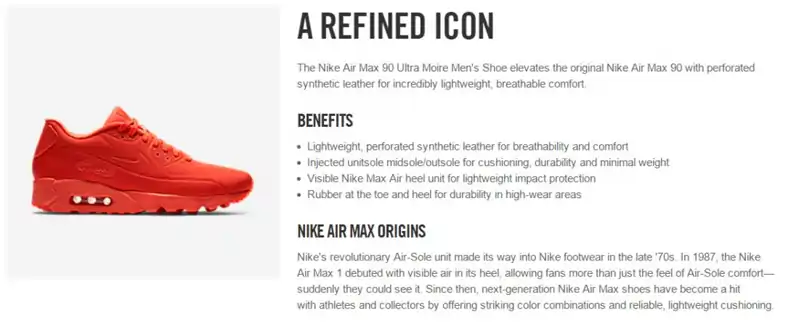
Brand marketing is a powerful tool for making your company's name more recognizable to customers each time they encounter it. Consumers are more likely to return if you use brand marketing to raise your company's visibility and establish long-term relationships with them.
But when it comes to promoting your brand, you must first understand what is brand marketing?
Brand marketing is a strategy that promotes a particular product or service by elevating the entire brand. It focuses on establishing and maintaining relationships between customers and marketing brand traits – traits that the viewer is thinking about when it comes to the specific brand.
You must learn how to combine branding with marketing effectively. Marketing strategy for brand awareness is all about a company and its product or service. Think of marketing as an effective business toolbox and branding as an integrated way to reach your intended audiences. Therefore, branding should always be the most important component of your marketing strategy.
Marketing is usually related to the effort to promote products and services. It covers several categories depending on your marketing objectives, such as converting your customers to purchase. This does not apply to brands.
You may even wonder how much branding you should be doing when the company is in marketing, if not both. Today's competitive markets require differentiation between business and product. And that means strong brand positioning and solid marketing. In simple words, branding is what you do, and marketing is the way you attract the consumer.
Branding is maybe even more important now that marketplaces are saturated, causing more difficulties in making meaningful connections among customers. Branding gives companies unique stories and a way to shift perception. The site stimulates interest and invites customers to discover the company brand. Instead of specifications and features, branding represents who a company is at its core. Brands aim to create an emotional relationship between consumers and businesses that support them.
Brand position is essential to increasing the effectiveness of a business brand. There can be various approaches depending on how you wish to highlight a particular product/brand. Generally, all brands insist on quality product lines. Because it's harder to distinguish yourself, it's logical to choose the areas where your brand concentrates.
Developing a brand can make a significant impact on your company's success. The brand marketing objective is a goal for all branded merchandise, such as developing a brand image and increasing sales. You can also take professional help for branding services if you are a new business or wish to rebrand.
Brand marketing should be included within your brand strategy. It covers actions taken to effectively apply the strategy and communicate a brand's message to the global audience. There are several important factors that must be considered in creating and executing a successful branding strategy.
Branding has become increasingly important as markets become more saturated, and it is harder to establish real relationships with consumers. Brands help companies tell a unique story that will help customers change perceptions. It attracts interest and invites customers to learn about their brands and promote them in their own unique way. Instead of specs and features, branding is about what an individual company represents. Branding means helping customers see the value in supporting a company and creating emotional relationships. A good branding services company can help you figure that out in case you need a direction.
Looking to Grow Your Brand Online?

Brands are a company’s most valuable asset. They are the embodiment of a company’s identity and purpose. A brand is not just about products or services. It is about the emotional connection that people have with it and what it stands for.
A brand marketing strategy is a plan that helps to achieve the company's goal of building an emotional connection with its customers. It also includes identifying target audiences, crafting messages, building marketing channels, and crafting marketing campaigns.
Three examples to remember in brand marketing
Brand advertising is a challenging task, both for new brand owners as well as existing brands. The following is a list of the most popular brands when you look at popular brands. While their logos are renowned worldwide, the companies have not been able to reach their present level of success without a massive marketing and branding campaign. Therefore, it can be very important for brands to develop and maintain an effective branding strategy despite their saturated market.
McDonald's has been recognized by many studies for being a global leader. The company relied largely on brand consistency. They're immediately known across all of Australia, from the USA to India, a brand that is synonymous with happiness. Why is Mcdonald's so distinctive in its name? The company has maintained its branding and products consistent over the last 60 years by making thoughtful brand improvements. Their logo remains relatively unchanged, and their branding t-shirts support unwaveringly the message we make you happy.

Nike is known for selling its products but primarily for promoting its storyline. Every time you see Nike's website, you'll see the story. A storytelling element in your brand is an excellent marketing strategy to help your company build a human aspect in your business. You don't need a groundbreaking story. Simply saying why you came here and presenting something relevant to your audience will have a much greater influence than simply selling something.

Apple's marketing plan is straightforward. Make a difference in people's lives by creating the movement instead. Apple does not simply market its latest phone or tablet; the company offers a lifestyle. It makes it easy for people to believe Apple products help improve the quality of their everyday lives. It created an avid fanbase. With this in focus, Apple is always mindful of fans' loyalty.

Social networking has an impact on brand development and advertising in many ways. Social networks allow consumers the opportunity to connect and interact with people in their own lives, provide recommendations and engage in conversations about products, services, and brands. A brand cannot afford to neglect social media to promote its brand.
Branding on social media does more than simply promote videos. It offers the opportunity to interact with the client, enhance their branding, and create a positive client experience. You can leverage digital marketing services to focus on Search Engine Optimization and Social Media Marketing.
When marketing a product, a company must define a branding identity first. In other words, these principles form the foundations that your marketing strategy should follow. Once you have identified the purpose of your brand, focus on assessing the position of your brand with competitors. And most importantly, create a message that is consistent.

Ferrero Rocher has launched a native advertising campaign to boost Ferrero's brand identity during the holidays. The campaign promoted a variety of holiday entertainment tips using native placement, targeting a relevant audience. This brand content was extremely informative for the reader and resulted in a substantial increase in brand affinity, which is the emotional relationship a client has toward a company.
In addition, it led to over 200K visitors to Ferrero's Web site and an 8 percent increase in retention rates. The result demonstrates a more positive brand impression through content-driven native campaigns in brand marketing.

This advert is an excellent example of communicating the brand's identity in the best possible tone. After Mercedes' long-time CEO Dieter Zetsche retired, BMW produced a television advertisement displaying Zetsche as his lookalike. Afterward, it's shown how he started his freedom and came into the car from the garage. The advertisement concludes with, “Thank you, Dieter Zetsche, for bringing us such a wonderful competition.” This ad does not have to engage its competitors in a quest for a brand identity and communicates their strength. Great branding!

How do Samsung's clothes dryer and laundry detergent work? Many people are aware thanks to Samsung brand recognition through native advertising, where AirDresserTM advertising was promoted natively at high-grade publishers. It also showed a high CTR for call-to-actions, which were featured in the ads. Using native advertising is an important tool in branding.
A brand marketing strategy uses differentiation to develop competitive advantages and satisfy customer needs. Brand strategy is the most efficient way for companies to determine their market share and grow revenue for their business. Brand marketing strategies are a set of guidelines enabling businesses to determine their key values.
A brand marketing strategy is your biggest weapon. It aims to help the company develop and grow by implementing various goals. In short, it represents essentially your brand's foundation which results in long-term relationships with your target market. Slapping together a few ideas and a logo is not a brand strategy. The success or failure of your branding strategy depends on the effectiveness of your marketing campaign, social media campaigns, and public relations.
Branding is not limited to companies such as Nike, Apple, McDonald's, and Apple Watch. All brand sizes have the opportunity to achieve these basic goals. Here is a detailed guide to help you create and execute a well-thought-out strategy to promote your brand.
It is the first step in any marketing strategy as any marketing and branding effort will be wasted without an accurate target group. Social media is an incredible platform that lets you understand customer taste. It's vital that you get to know when people make the purchase decision. Do not try to attract people, as this only is counterproductive for your customers because your clients think your business doesn't care about them.
Branding and advertising must include definite audiences that can be determined from internal and external data. Create personas — fictional representations of ideal consumers — that include demographics and behavioral data to aid brand tone in voice media purchasing and marketing strategy.
Once the branding strategy is complete, it will be easy to execute the marketing.
Your interactions with customers need constant meaning, your visuals, and brand tone need to align and be recognizable. Brand consistency is vital in creating and maintaining loyalty because you need to know the name of the brand to get to the right person. Color improves brand recognition, a recent study has found. You need to make your message co-equal; it is critical to make sure your message reflects your values.
Brand development is difficult but includes many intangible and invisible aspects of branding. The biggest factor determining successful marketing is brand feeling. But just by being difficult to measure, this should not be dismissed. It may be less easy to quantify, but analysts and executives will often dismiss qualitatively crafted brands' work as important in marketing.
For example, the Apple product launches every year, and the customers wait in line for several days for the cool phone to arrive and get it in-store. The reason? iPhones aren't just smartphones you use for everyday use. Its emotional values, particularly for younger audiences, are enormous. It's almost like membership in the exclusive club.
However, the idea of being consistent is contradicted by many businesses that have adapted and are willing to change to follow current trends. These changes can't be done without changing your brand identity. A competitive and rapidly growing market requires changes to the appearance and look of a product or service that are cosmetically modified. You can concentrate on your advertising and promotional tactics, product name, and brand name while maintaining your brand identity and core values. Incorporating new approaches can help retain existing clients and acquire new ones.
A loyal client is one of your best assets, so try to give them as much gratitude as you can. You can write customized thank-you letters to your clients. Freebies can help you promote your company to customers who are passionate about your brand and its services. While the investment may seem huge, the return on that investment is likely to be significant in the future. So, giving your clients branded goods and gifts is an excellent way to show your respect.
Identify brand messages internally and externally with an internal and external focus on contacting customers and staff. Make sure that it also identifies brand goals, visions, values, and positioning statements – who and what brand promises the brand. This component of brand stories lasts a lot longer, as the customer remembers their product purchase.
Telling stories can influence consumers and motivate them. Because an amazing account is unforgettable, people care about your company, which incites loyalty, trust and increases retention. There are companies that provide branding consultant services to help you achieve this. It is a company or individual who helps companies in planning and executing the brand strategy, advertising and marketing.
Brand guidelines provide detailed advice about how to avoid using branding components for cohesion. Brand guidelines outline the voice and tone of the brand and highlight images and styles, including a content style guide. Brand guidelines are crucial to brand marketing because they enable businesses to build and scale their brand across all platforms. In addition, it includes a brand library for acquiring branded assets.
Brand building strategies must be derived from research that describes the competitive landscape and how the brand addresses the specific requirements in this context. It helps to set realistic business goals and understand the way competitors are positioning brands. Competition analysis is very crucial to your strategy. For example, if you put new products in new areas, you must also know how they are located in other spaces.
Goals and objectives include measurement in terms of branding and marketing metrics along with overall branding goals.
What does a brand promise? What does the consumer experience in a business relationship? Working backward and answering this question first is a great method of identifying and describing the product's purpose.
Brand marketing plans include a timeline to begin the implementation. A successful brand marketing campaign should include details on when a new website can be launched as part of its rollout. Remember, when this is another brand rebranding, everything is redesigned, from the signature email template to the logo design.
Try to find the balance between what matters to you and what matters to your customer. Ask questions such as:
Branding strategy requires intuitive thinking. It may be useful to use data as the basis for your strategies. How do brands know their strategy by using their branding as a story that they tell? A story is more than just what you tell. It must begin with a middle and end, and every part of it should be compelling enough!
The mobile app market has reached more than 55% of consumers a day through SMS and messaging platforms. With this overwhelming competition, it is vital that your business stands out in this market. Keep your customers informed about you. Create a lasting and authentic experience and not simply product consumption. With a good business plan, your customers would want your products and services for life.
Increasingly brands and products become more common as branding becomes more evident. As a result, it is 4.5x more likely than other brands that consumers feel strongly about buying from your company.
Looking to Grow Your Brand Online?

J
The blog is well designed and the content is easy to follow.
J
The blog discusses marketing strategies, products and services. Great insights!
J
I am so glad to see a company going the extra mile and taking the time to write a blog on brand marketing.
O
The blog is an interesting read.
P
PepsiCo is one of the best-known brands that engages in marketing. PepsiCo engages in marketing through its blog and social network activity. PepsiCo features a wide range of content including videos, infographics, and articles that focus on key topics like customer engagement and brand culture. That is something to learn from.